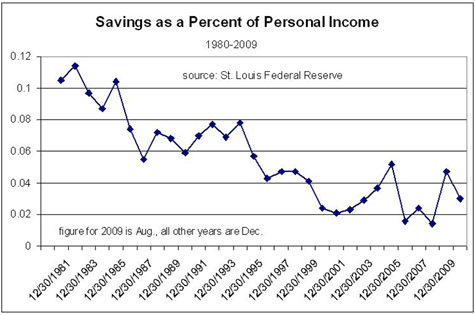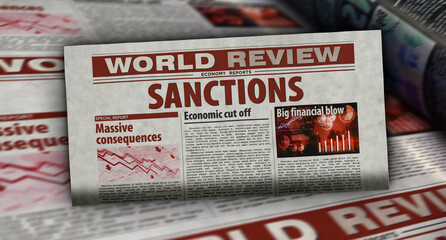“I’m sorry,†Mr. Katz. But I didn’t buy gold when it was below $1,000/oz. as you advised. And now I am afraid to buy because it is too high. What should I do?
This question underlines one important fact of the markets. Playing any market does not consist of just one or two decisions. It consists of a new decision every day. The gold bugs of the 1970s did not simply make two decisions (a buy in mid 1970 and a sell in January 1980). They were confronted with a new situation every day for ten years. They had to make 2500 decisions. They did not have to make all of them correctly, but they did have to make most of them correctly.
1970-80 was the first up swing of the commodity pendulum. We are now in the second up swing of the commodity pendulum, and again we have to make a decision every day, and we have to make most of them correctly.
So let us step back and look at the big picture. We now live in the economic system created by John Maynard Keynes. Someone pointed out to Keynes that in the long run people could not live under his system. He replied, “In the long run we are all dead.â€
Keynes died in 1946. This is the long run, and we have to live under the system that Keynes developed. (Actually he plagiarized what is called the Keynesian system from two Americans, William Trufant Foster and Waddill Catchings, whose 1928 book, The Road to Plenty, sets forth the Keynesian system some 8 years before Keynes himself.) So what is the Keynesian system, and why can’t people live under it in the long run?
If you study the economic history of the world, it can be summed up very simply. Prior to 1785, most everyone in the world was incredibly poor. After 1785, the world began an incredible accumulation of wealth, which started in the Anglo-Saxon countries. The 19 th and early part of the 20 th century saw the greatest accumulation of wealth in human history, and this was mostly limited to the Anglo-Saxon countries and those other countries which imitated them. A feel for this great increase can be obtained from world population figures (as poverty was the cause of many deaths prior to 1785). The world population in 1800 AD was just under one billion. World population in 1900 AD was 1.6 billion. And world population in 2000 was six billion. There has never been a period in human history which saw such incredible growth.
The cause of this growth was that, in 1785-86, Noah Webster (the author of the first American dictionary and the father of our copyright laws), made a trip through the 13 newly independent states. He spoke to state legislators and other influential people and persuaded them (at least in the North) to abolish what was then called usury and is today called interest. Jeremy Bentham did the same thing in Britain in 1787 with his paper “A Defense of Usury.â€
Legalizing interest gave people an incentive to save. Businessmen would borrow the savings of the community and use it to build machines. These machines were put in a building called a factory where they vastly increased the productivity of labor. The great wealth produced by these machines was used by the businessmen in several ways: to cut the price of goods sold to consumers, to raise the wages of workers, to increase their own profits and to pay interest to the savers: win-win.
You were taught in school that these new machines were caused by a great spirit of inventiveness which spread over the Anglo-Saxon people shortly after 1785. In America, somehow this spirit settled on the people of the North but did not come to the South until after the Civil War (when the carpetbaggers introduced the Northern economic system to the South).
What you were taught in school was a lie. All the peoples of the world have equal native intelligence. The early machines used in the industrial revolution were not new. Most of them had been invented many years before and sat in their inventors’ workshops, gathering cobwebs, until enough capital had been accumulated (by the savings of the community) for businessmen to buy them. Prior to 1785 there had been no lack of brains. (The writing of the U.S. Constitution in 1787 is proof enough of that.) What stopped the industrial revolution from occurring before that time was a lack of capital. This lack of capital had been caused by the laws (dating from the Middle Ages) prohibiting interest (or as they called it at the time, usury).
So much for history. Where Keynes came into this picture was that he repealed the system set up by Webster and Bentham. He abolished interest. Of course he did not do this openly. Being a liar and a plagiarist he never did anything openly. He abolished real interest but not nominal interest.
If you are deciding to save, then it is real interest which is important. Assume that the nominal interest rate is 5%, and you put $1,000 into the savings bank at that rate. At the end of a year, you have $1,050. However, if average prices have also risen by 5%, then the same goods which had cost $1,000 at the start of the year now cost $1,050. In terms of the goods you can buy, you have made no gain at all. You have received 5% nominal interest but 0% real interest.
By providing an intellectual defense for F.D.R.’s abolition of the gold standard in 1933, Keynes set in motion the massive creation of money which has been going on for the last 76 years. Over that time, the rate at which prices rose has been almost exactly equal to the rate of interest. In words of one syllable, Keynes undid Noah Webster’s achievement. He abolished the (real) rate of interest, and he took away the incentive for saving.
As the chart above shows, Americans have pretty much stopped saving. Here was the greatest event in the history of the economic world, and the ignorant people of our time have destroyed it. The world lived in abject poverty for all of recorded history, and then, principally in America and Britain (and a few other Anglo-Saxon countries), interest was legalized, the people started saving, and there poured forth a cornucopia of wealth such as the world had never seen.
And the idiot John Maynard Keynes actually tried to tell people that saving was bad. He argued that breaking a window (or trashing a car) made the community richer. (This was the logic behind Obama’s cash for clunkers program.) Well, if saving was bad, how come the number one saving country, the U.S.A., became the richest in the world? Keynes, as I have mentioned, died in 1946. How come Britain, which took his advice, lost its position as the leading world’s currency in 1947-48?
Here we are in 2009. It is now the long run. Keynes is dead, but the voters of this country have elected a Keynesian, and he is in the business of destroying America, just as Keynes destroyed Britain. Which leads directly to the question, HOW DO YOU SAVE YOURSELF IN THIS EVIL AND IGNORANT AGE?
Here is the point. With a zero real interest rate, it is impossible to accumulate capital for your retirement. Our level of wealth has to drop back to that of circa 1800 AD. The world population has to drop back to one billion from the current six billion. FIVE BILLION PEOPLE HAVE TO DIE (unless we change back to the traditional American gold standard which brought us such prosperity). How can you make it in such an economy?
Well, as Yogi bear used to say, “I’m smarter than the average bear.†And there is a way to beat John Maynard Keynes – if you are smarter than the average bear. To do this you have to understand the commodity pendulum.
Keynesianism was made the political norm by J.F.K. when he instituted permanent, regular budget deficits, to be financed by paper money, in 1963. The money supply started to increase; consumer prices started to increase; however, commodity prices remained stable for 8 years. Does this mean that commodity prices are immune from the law of supply and demand? No, as the Keynesian governments of the 1970s created more money yet, commodity prices exploded to the upside.
In short, commodities are what the economist calls inelastic. They take a long time to respond to the forces of supply and demand. Commodities failed to respond from 1963-1971, then they made up for lost time by tripling in price. That was the first swing of the commodity pendulum. In the down swing, with commodities cheap, there was no feed through into consumer prices. Hence the Fed was not troubled by “inflation†and could keep its credit policy easy. In the up swing, with commodities rising rapidly, the higher commodity prices fed through into consumer prices. Over the decade of the 1970s, consumer prices doubled, culminating in a 13.3% rise in 1979. The Fed was forced to tighten, and (nominal) interest rates (T-bills) hit 16%.
Then we entered the second swing of the commodity pendulum. First, commodity prices fell from (CRB) 337 in 1980 to 183 in 1999. During this time Volcker and Greenspan were able to ease because the declining commodity prices fed through into consumer prices and modified their rise. It was called “disinflation.†But then commodity prices formed a double bottom in 1999-2001, and they have been rising ever since. We are now in the second up swing of the commodity pendulum (perfectly analogous to the first up swing in the 1970s). We can expect the same cause to have the same effect. As higher commodity prices feed through into consumer prices, the Fed will have to tighten. And when the Fed tightens, this stock market will be dealt a harsh blow.
This is how you can beat John Maynard Keynes and accumulate capital for your retirement. While most Americans are falling into the Keynesian trap, you can play the commodity pendulum/
Look at what happened to those who believed in the establishment in the 1970s? In the late 1960s, they were saying, “Buy good, sound stocks and hold them for the long pull.†Then in 1967-68, they joined in the technology bubble, an exact precursor of the dot-com bubble of 1999, and it wound up with the same result. From high to low, the DJI lost over 70% of its 1966 value by 1982 in real terms. Over the corresponding period (1966-1980), gold multiplied in price by a factor of 25 times (nominal) and by 8 times (real). That was your choice. Believe the establishment and lose 70% of your real wealth, or believe the gold bugs and gain 700% of your real wealth. (An 8 times multiple is a 700% gain because you already start out at 100%.)
And then what did the establishment do? For 15 years (’66 to ’81), they screamed at their customers: “Don’t sell. Hold for the long pull. Stocks have to go up. They always do.†But in 1982 they did a complete reversal. “Follow Henry Kaufman†was their song. Kaufman had never accomplished anything in his life, but suddenly, to the media, he became the greatest economist in the world. What was Henry Kaufman saying in 1982? He was saying, depression, higher interest rates, lower stock prices.
Well, that was the choice in 1982, the two HKs, Henry Kaufman and Howard Katz. Henry Kaufman was saying “sell.†Howard Katz was saying that this market was going up so high that he did not dare put a number on it (because any number named would turn out to be too low.
You face the same choice now. You can follow the establishment, the people with the big, fancy titles who are almost always wrong. Or you can follow the real economists, the people whose correct predictions prove them right. Your choice. Your money on the line.
To answer our original question, is gold too high? Gold is now in the second upswing of the commodity pendulum. In the first upswing, it multiplied by a factor of 25. So far, gold has multiplied by a factor of 4. Are we near the end? Probably not. I regularly monitor this second upswing of the commodity pendulum and estimate where we are now as compared with the pattern of the 1970s.
For those people who are not impressed by fancy titles, I publish a newsletter on the financial markets called the One-handed Economist ($300/year). You can subscribe by visiting my website, www.thegoldspeculaltor.com. When you consider how much money you have at stake and how difficult it is to make correct decisions on the markets, it would be cheap at double the price. You might also be interested in visiting my blog (no charge) at www.thegoldspeculator.blogspot.com. This week’s blog is OBAMA HATES AMERICA. Thank you for your interest.
# # #











0 Comments